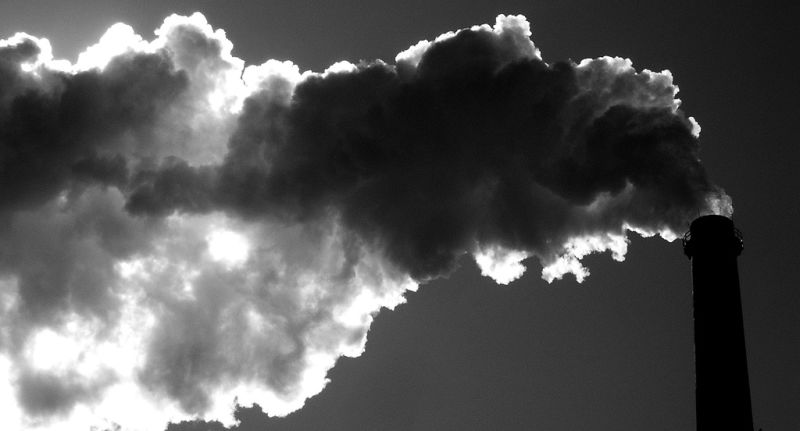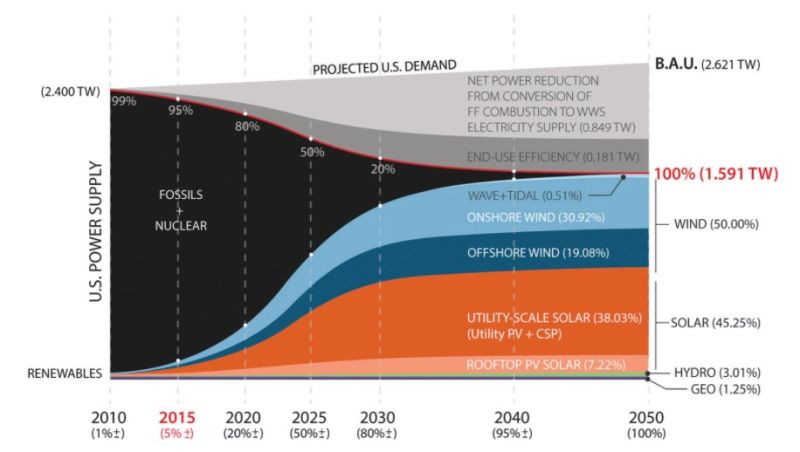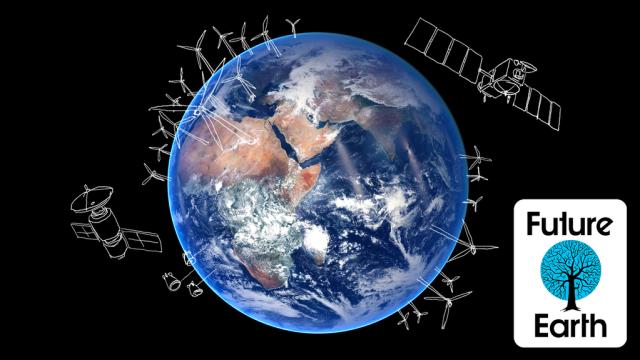The signs of climate change are all around us, and at long last, the world is taking action. This week, leaders from 196 countries are meeting in Paris to negotiate a historic climate treaty that could steer humanity away from dangerous global warming and toward a low-carbon future.
Climate change is a big story — the biggest of our generation — and it’s one that touches everything from our forests to our cities to our technology. For the next two weeks at Gizmodo, we’ll be sharing pieces of that complex story. We’ll be taking you from the slippery Antarctic ice sheets to the broiling Amazon basin, examining how cities are fortifying themselves against rising seas and how new energy sources can wean us off fossil fuels. And we’ll be reporting live from COP21, taking you inside the most important climate negotiations in history.
“This is a pivotal moment for the future of your countries, your people and our common home,” said UN Secretary General Ba Ki-moon. “We cannot afford indecision, half measures or merely gradual approaches. Our goal must be transformation.”
To get you primed for the days ahead, here’s a quick run-down on what this week’s climate change summit is all about and what it means for our collective future.
COP21: How Did We Get Here?
A lot of hopes are pegged on Paris, but it’s important to place this climate summit in its historic context. Since 1995, the UN has hosted an annual “Conference of Parties” — a global meeting to discuss what can be done about global warming. Early summits led to the first international climate treaty, the 1997 Kyoto Protocol, which outlined emissions reductions targets for developed nations. Sadly, the Kyoto Protocol was never ratified by the US, a fact which weakened its effectiveness both literally and symbolically. Although a 2012 extension keeps the treaty in effect until 2020, today the Kyoto Protocol only applies to a small fraction of carbon emissions. It isn’t doing much to slow global warming down, and in five years it will be doing even less.

Image Credit: Senor Codo / Flickr
The path toward a much more ambitious climate treaty began at in Copenhagen in 2009. If you remember anything about COP15, it’s probably a bunch of world leaders shuffling back to their countries after several days of fruitless negotiations. Despite high hopes and the best of intentions going in, no binding agreements to limit the world’s carbon emissions were reached.
However, the Copenhagen climate summit did result in several important outcomes. For one, world leaders agreed that we should strive to limit global carbon emissions to stay within a 2C global warming target. While two degrees of warming will still have some major impacts, it’s a nice round number that — to the best of our knowledge — will keep Earth’s climate from spiraling dangerously out of control.
Breaking Down the Numbers
In its latest report, the International Panel on Climate Change estimated that for humanity to preserve a 50 per cent chance of limiting itself to 2C of global warming, the world can support a maximum carbon emissions “budget” of 2900 — 3200 gigatonnes (1 Gt=1 billion metric tonnes)
As of 2014, 1970 Gt of that 3000-odd Gt budget have already been used. That means we’ve got a little over 1000 Gt of carbon in the bank.
Copenhagen resulted in one other very important agreement: that developed and developing countries alike would take steps to reduce their carbon emissions. While there’s no doubt industrialized nations are mostly to blame for climate change, the entire world is now in this mess together. Rich countries also agreed to shell out $US100 ($139) billion dollars per year to help developing nations invest in renewable energies.
Two years later at COP17 in Durban, world leaders decided that a new, post-Kyoto agreement applying to all 196 countries was to take effect in 2015 at COP21. Ahead of COP21, countries were charged to come up with carbon reductions pledges, so-called “Intended Nationally Determined Contributions” (INDCs). Those pledges have been rolling in over the past year. As of this week, every single developed nation and over 100 developing countries has outlined a series of goals and strategies to dramatically curb its carbon pollution over the next ten to fifteen years.
But while the numbers we’ve put on paper are a start, they still aren’t enough to keep the world within a 2C warming target. Our Big Hope for this week’s conference is that wealthy countries will agree to chip in more, and that new partnerships will spur a fast transition to low-carbon economies worldwide.
Toeing the Line Ain’t Enough
One possible — although certainly not ideal — outcome of the Paris climate summit is that every country will agree to fulfil its INDC pledge and not an ounce more. Here’s what that would mean.
First, the good news: all of the world’s top carbon offenders are pledging to substantially reduce their greenhouse gas (GHG) pollution over the next ten to fifteen years. The EU plan, which would slash GHGs by 40 per cent by 2030, is ostensibly the most ambitious of the lot. The United States has promised to cut emissions by 26 to 28 per cent by 2025, while Russia aims to shave 25 to 30 per cent off its carbon footprint by 2030. China, which recently overtook the US as the world’s largest emitter, is aiming for its carbon emissions to peak by 2030. Over the next fifteen years, China also plans to reduce its “carbon intensity” (per capita emissions) by 35 to 40 per cent. Up-and-coming carbon giant India likewise plans to reduce its carbon intensity by 35 per cent.
For most countries, cutting back on fossil fuels will go hand-in-hand with expanding renewable energy sources, including wind, solar and geothermal power. The US pledge falls in step with the Obama administration’s recent Clean Power Plan, which calls on states to cut one third of their power plant carbon emissions by 2030. For that plan to work, sunny states will need to invest heavily in solar and coastal states in offshore wind. China, whose wind and solar capacity has skyrocketed over the last few years, is hoping to source 20 per cent of its energy from renewables by 2030. Countries with significant forest resources like Russia plan to offset future emissions by maintaining and regrowing natural carbon sinks.

This graph outlines a proposed plan to switch all energy in the US to renewable sources by 2050. Image via Mark Z. Jacobson / Stanford
World’s largest emitters aside, over 100 developing countries have submitted plans to cut emissions and produce more clean energy. All in all, virtually every nation on Earth is promising to do more to tackle climate change than ever before — and that’s awesome.
Unfortunately, when you add it all up, it isn’t enough to stay within our 2ºC warming target — not even close. Based on the INDC pledges to date, an analysis by the International Energy Agency finds that annual global carbon emissions will continue to rise until at least 2030, and that every last drop of our “carbon budget” will be used up by 2040. “While nations are doing more than ever before, they are not keeping up with the pace needed get on a realistic pathway to limit warming to 2° C,” writes the US climate change policy consulting group Climate Advisors in a recent report.
If the carbon pledges to date are as far as we go, we’re probably in store for at least 2.7C of warming by the end of the 21st century and 3.5C of warming by 2200. What does that mean for the planet? A whole lot of bad, according to the Intergovernmental Panel on Climate Change (IPCC) — the team of experts charged with predicting what the world will look like under different carbon emissions scenarios.

Image Credit: Purvis et al. 2015
Let’s say we overshoot our global warming target by a single degree this century. In that case, IPCC models predict anywhere from 0.25 to 0.6 metres (0.8 to 1m) of sea level rise by 2100. Over the longer term, the world might be in for up to 6 metres (6m) of sea level rise — enough extra ocean to swallow coastal cities worldwide and displace tens of millions of people. Three degrees of warming would accelerate the thaw of permafrost, releasing billions of tonnes of additional heat-trapping methane to the atmosphere. Major staple crops, including wheat, rice, and maize, would face additional hardship. Rising ocean acidity would make life near impossible for corals and other marine calcifying organisms. The droughts and mega-fires we got a taste of this summer would become commonplace.
I could go on, but I think you get the idea. There’s a reason scientists are warning us not to cross the 2ºC threshold. The carbon pledges on the table so far simply don’t get us there. Fortunately, we can do much more, and that’s — hopefully — what Paris is going to be all about.
Double Down On Developing Countries
Beyond the INDC pledges, the climate summit in Paris this week is an opportunity for nations to come together and agree to step up global ambition. Specifically, experts say wealthy countries need to double down on helping the developing world decarbonize.
Today, 60 per cent global emissions comes from developing countries — a dramatic shift from 30 years ago. By 2030, virtually 100 per cent of emissions growth will be in the developing world. It’s not in the US or EU that we’re going to close the emissions gap — it’s in Southeast Asia and Central America. And in the long run, helping the developing world transition to clean energy makes economic sense: after all, the extra cost of building a green factory from scratch is less than the cost of retrofitting an existing, dirty energy one.

Image Credit: AP/Dirk Lammers, File
The good news is, developing countries want to do more. Over 90 nations, including Columbia, Indonesia and Mexico, have conditions in their pledges stipulating additional emissions reductions they’re willing to make if the developed world lends a hand. As a recent analysis shows, implementing all the conditional pledges currently on the table would shave an additional 11 to 16 Gt off our annual emissions, enough to close half the emissions gap to 2C.
Moving beyond pledges, new partnerships between the developed and developing world are needed to transition everyone off fossil fuels. These partnerships would not only limit global warming, but help poor countries meet other goals. Improving the efficiency of renewable energy sources, for instance, could shave another few gigatonnes off our global emissions while bringing hundreds of millions of people onto the grid for the first time. By ending deforestation in tropical countries, we can avoid another 6.2 gigatonnes off carbon emissions while preserving biodiversity and the myriad ecosystem services forests provide.
In Paris, developed nations need to clarify exactly what sorts of partnerships they’re willing to make and what level of resources they can contribute to help the industrialising world decarbonize quickly. “As the main victims of climate change — the impacts of which they are already suffering — they [developing nations] have a much bigger stake in dealing with this challenge,” writes Shyam Saran, India’s chief negotiator on climate change from 2007 to 2010. “They could do much more if they had access to finance, technology and capacity building from developed countries.”
Paris may be remembered as a turning point; a singular moment when nations decided to work together to push for a low-carbon future. After COP21 comes the hard work of implementing our pledges and then some. That’s going to take time, and it’d be naive to think there won’t be roadblocks along the way.
But with nearly every country finally acknowledging that climate change is a shared, global challenge, I for one am feeling optimistic. “We have never faced such a test,” Ba Ki-moon said. “But neither have we encountered such great opportunity.”
Artwork by Jim Cooke
